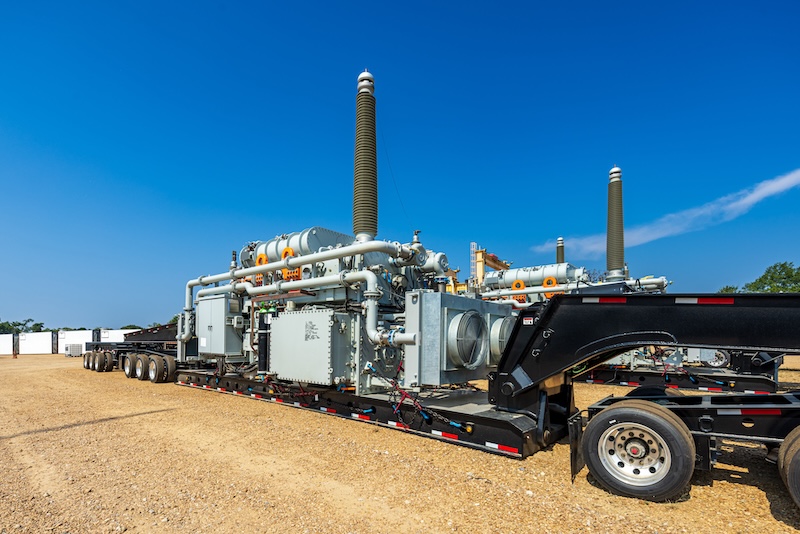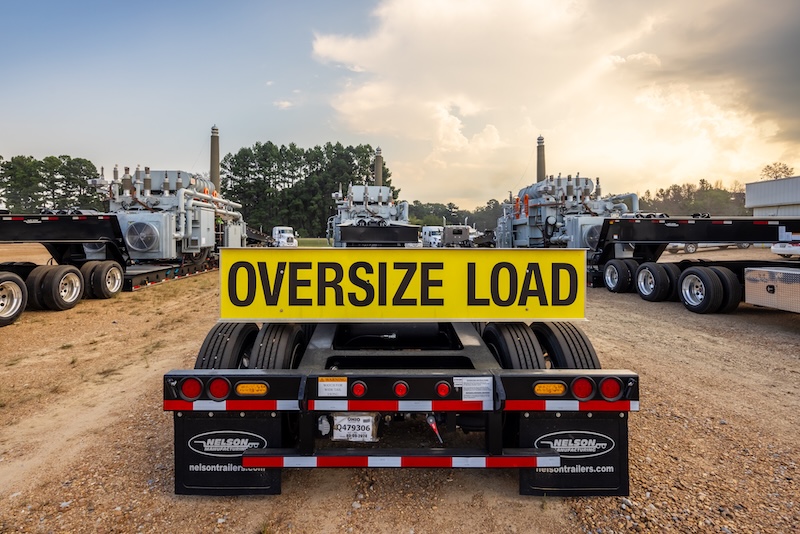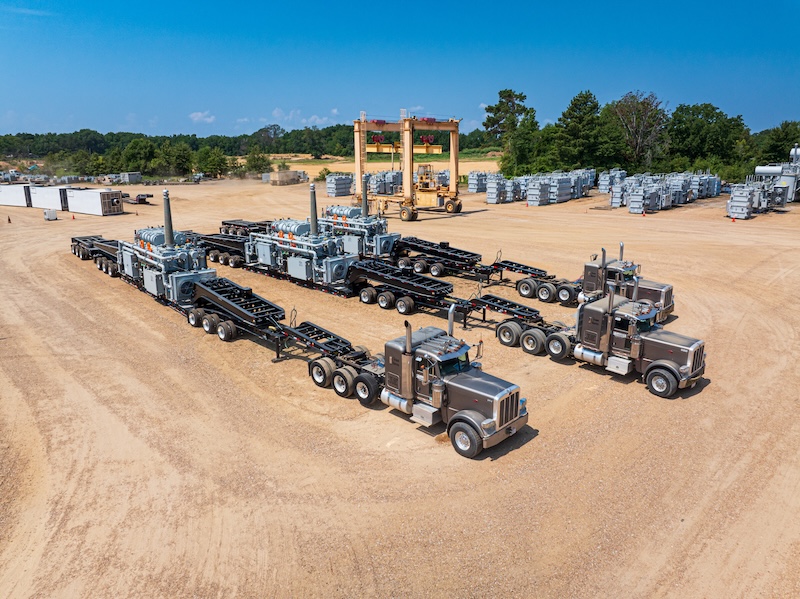Mobile Transformers Secure the Grid
There is no question that weather events place enormous stress on the country’s power grids. Nowhere is this more clearly on display than in the renewable energy market, including the turbulent conditions of the offshore wind industry. As a result, many utilities and energy producers are taking stock of their grid resiliency strategies — leading many to undertake extensive grid modernization projects as a way to improve their ability to respond to outages and restore electrical service to customers as quickly as possible.

However, the resulting demand for transformers has put pressure on supply chains around the world. With lead times increasing, getting a power transformer to replace a failed unit can take many months, even years.
Wind power producers and other renewable energy developers need to be nimble to respond to fast-changing conditions and address unforeseen events. Utilities and developers are embracing new, mobile transformers to restore grid connectivity onshore, when permanent infrastructure has been damaged or is shut down for planned maintenance or upgrades. Engineered for versatility, mobile transformers allow utilities to respond quickly and efficiently to dynamic grid conditions, and, unlike traditional transformers, they are built to be dispatched, installed, and energized within weeks – significantly reducing downtime.
Service disruptions due to extreme weather events are growing
According to the National Oceanic and Atmospheric Administration (NOAA), 2024 saw 27 extreme weather events that topped $1 billion in damages in the U.S., the second highest recorded number in history. This includes 17 severe storms, five tropical cyclones, two winter storms, one flooding event, one drought and one wildfire — underlining the fact that no part of the country is immune to extreme weather. Hurricane Helene topped NOAA’s list, causing catastrophic flash flooding and power outages that impacted millions of people from Florida to North Carolina.

Getting power up and running for impacted customers is a key priority for utilities and developers alike. The ability to move transformers quickly to where they are needed has shown, more than ever, to be a valuable advantage for strengthening grid resiliency. New mobile transformers are built to be highly versatile with a lightweight yet hardened structural design and multi-voltage capabilities. Coupled with a transformer service model that includes storage and installation, utilities and developers can rely on our turnkey solution to handle complex logistics requirements.
1. Hardened design
Transformers are specialized pieces of equipment that, traditionally, have not been designed to be picked up and deployed rapidly across the country on short notice. Mobile transformers have a unique low profile and hardened design that protects the internal machinery during transport and installation. They are then rigorously tested to ensure that they can handle the stress of excessive G-forces from acceleration and deceleration, tight turning and uphill and downhill driving. As important, they are designed to be picked up by various machinery and quickly stabilized in place.
2. Multi-voltage
The ability to handle different voltage levels also enables increased flexibility, allowing the user to plug in the transformers where they are needed. They cover a range of voltage levels and a variety of deployment scenarios. This is particularly important when integrating renewable distributed energy resources (DERs) into the grid – such as the standard 34.5 kV internal grid of the wind/solar park to the transmission voltages of 345-230-161-138-115-69 kV. Mobile transformer solutions also provide tertiary voltages to adapt to the local auxiliary voltage.
3. Delivered as a service
Most companies can benefit from mobile transformers, especially if they have a reduced number of specialized expertise on staff to transport, set up, and configure the solutions on site. It’s important to work with a manufacturer that can take responsibility for storing, transporting, setting up, and shutting down the solutions. There are a lot of hidden tasks associated with transformer deployment – including permitting, regulatory compliance and reporting, and logistics planning. Off-loading these details to experts allows utilities to focus on their core mission of transmitting and delivering electricity to consumers.

Mobile transformers enable operational agility when it is needed the most
Extreme weather events are growing in frequency and intensity. Supply chain challenges are also likely to persist for the foreseeable future. In light of these realities, utilities and energy developers need to build increased flexibility into their grid resiliency strategies.
Ready to be deployed anywhere, anytime within a few weeks, mobile transformers allow utilities to restore grid connectivity when existing infrastructure has been damaged or shut down due to planned maintenance or upgrades. Built for versatility, these solutions are ideal for deployment in a variety of scenarios, and can even be offered as a service, minimizing the complexity of responding to unforeseen circumstances. The future of the grid and its ability to meet increased demand in uncertain times depend on this flexibility.
Deia Bayoumi is Senior Vice President of Marketing & Sales for Hitachi Energy’s Service Business in North America.
Hitachi Energy | www.hitachienergy.com
Author: Deia Bayoumi
Volume: 2025 July/August








